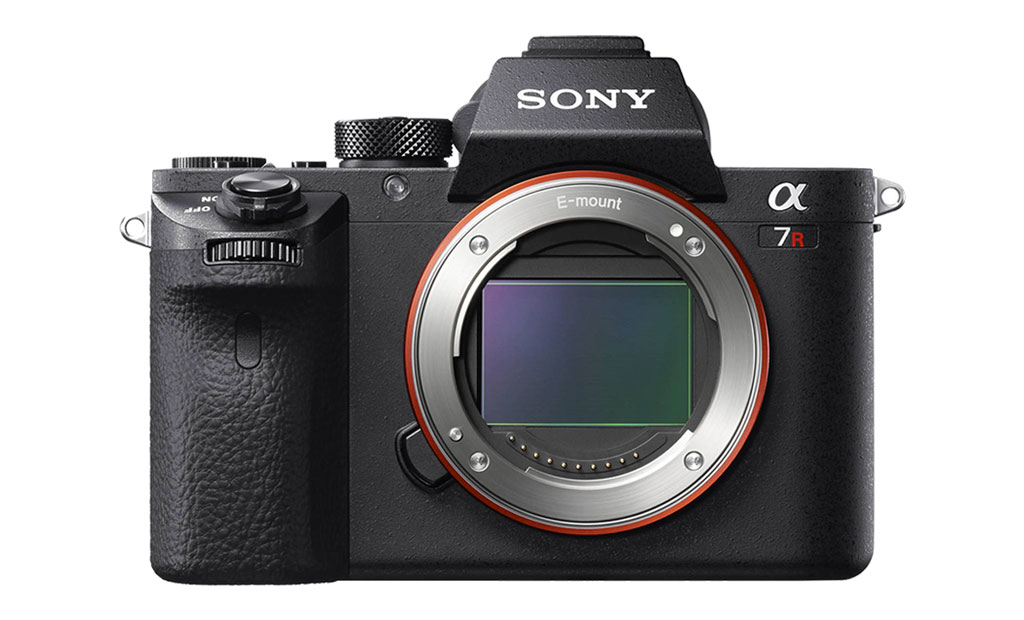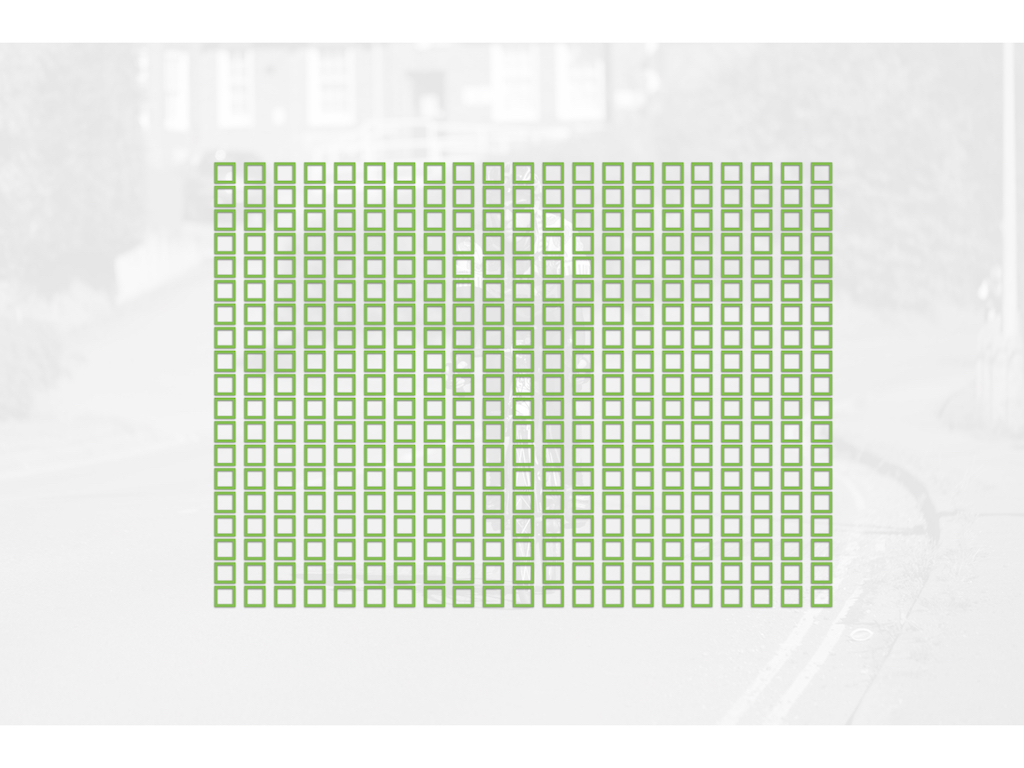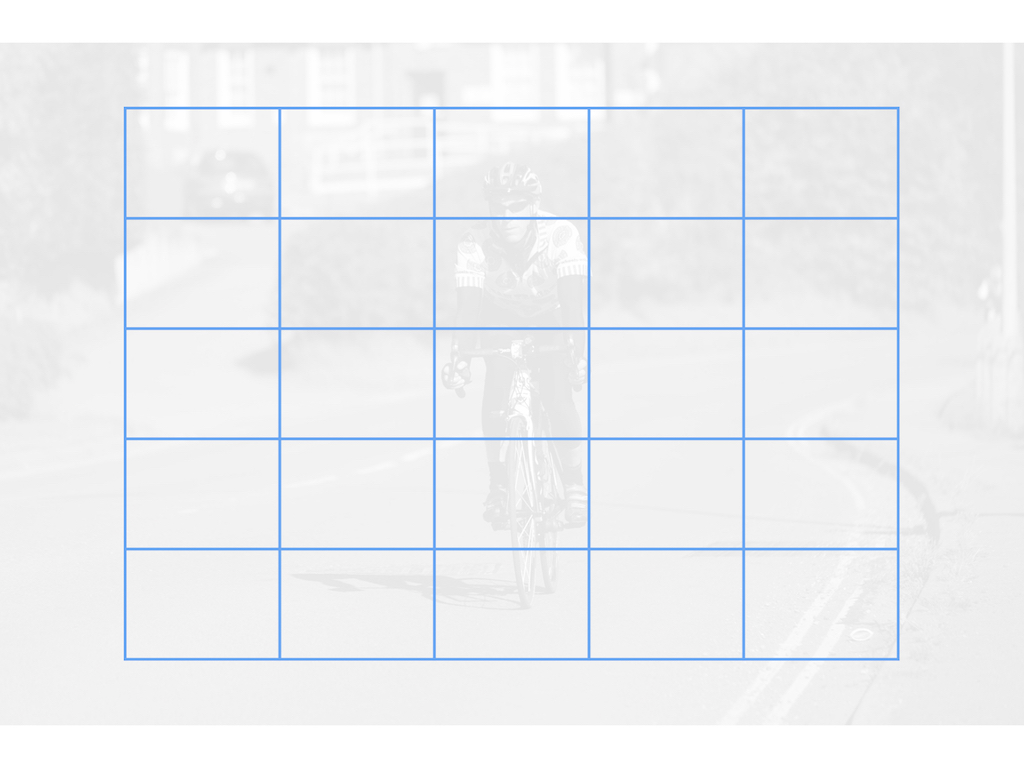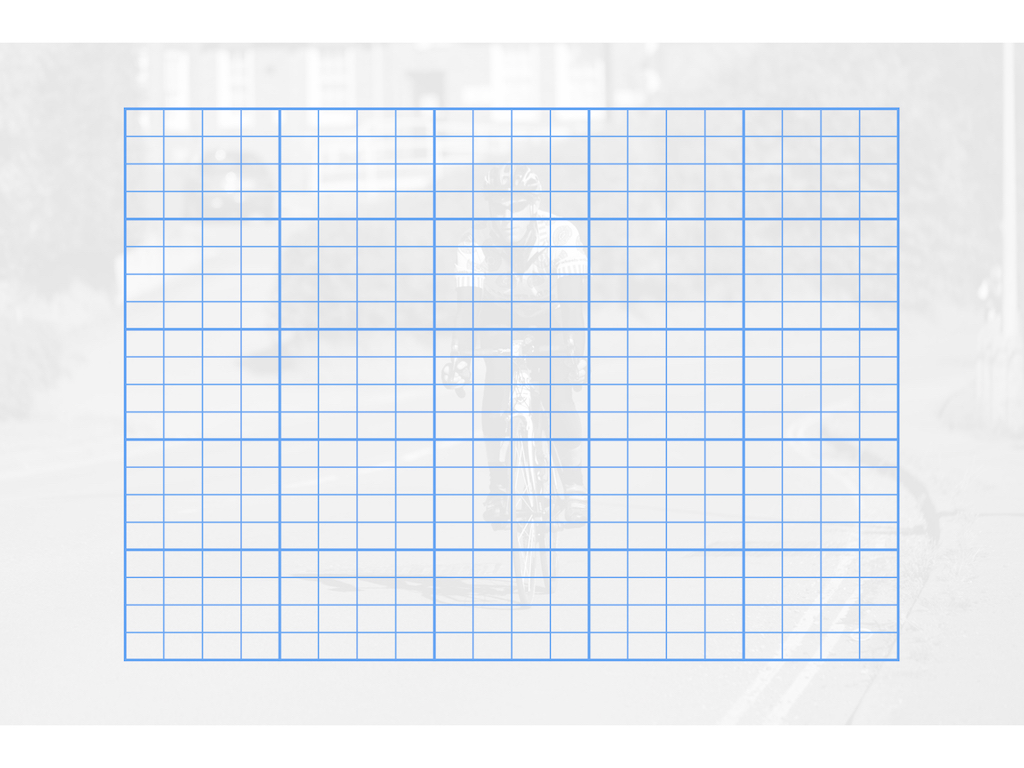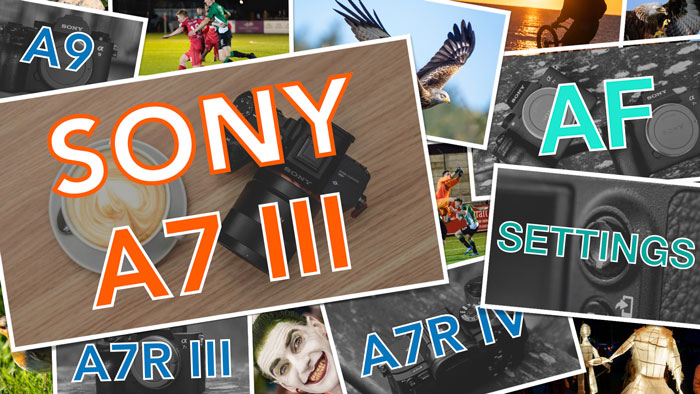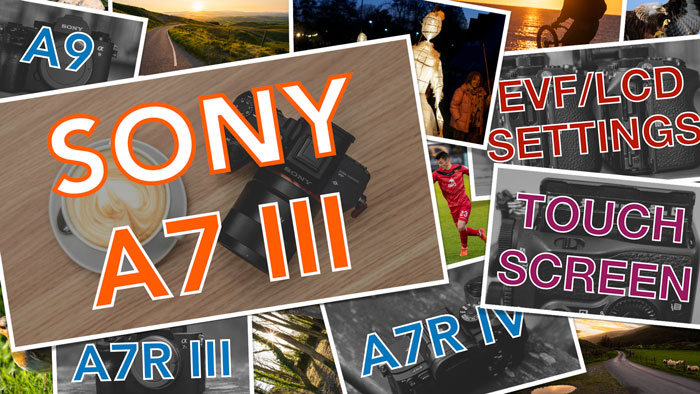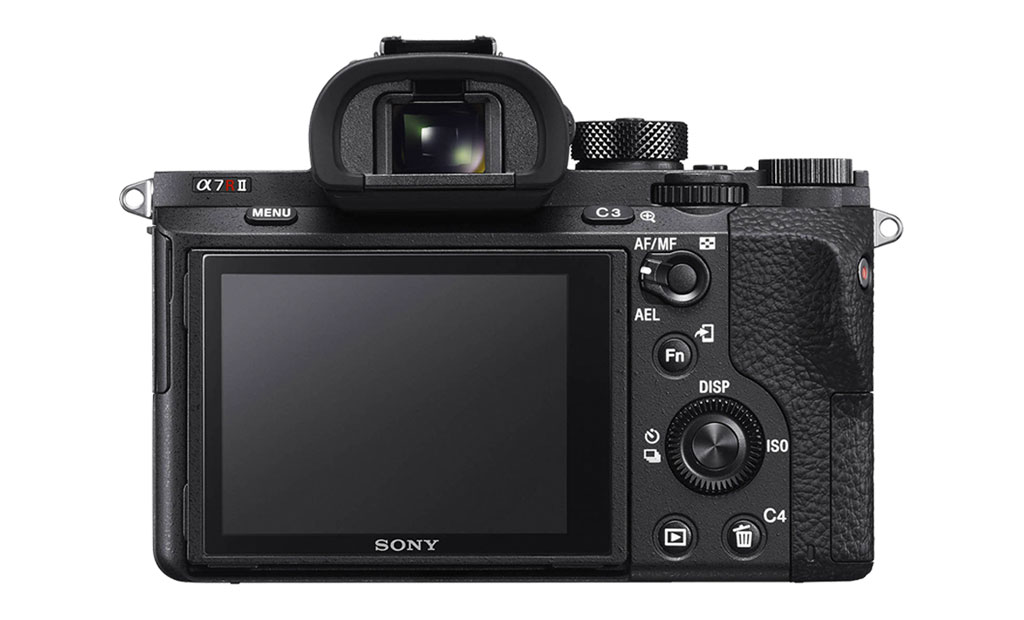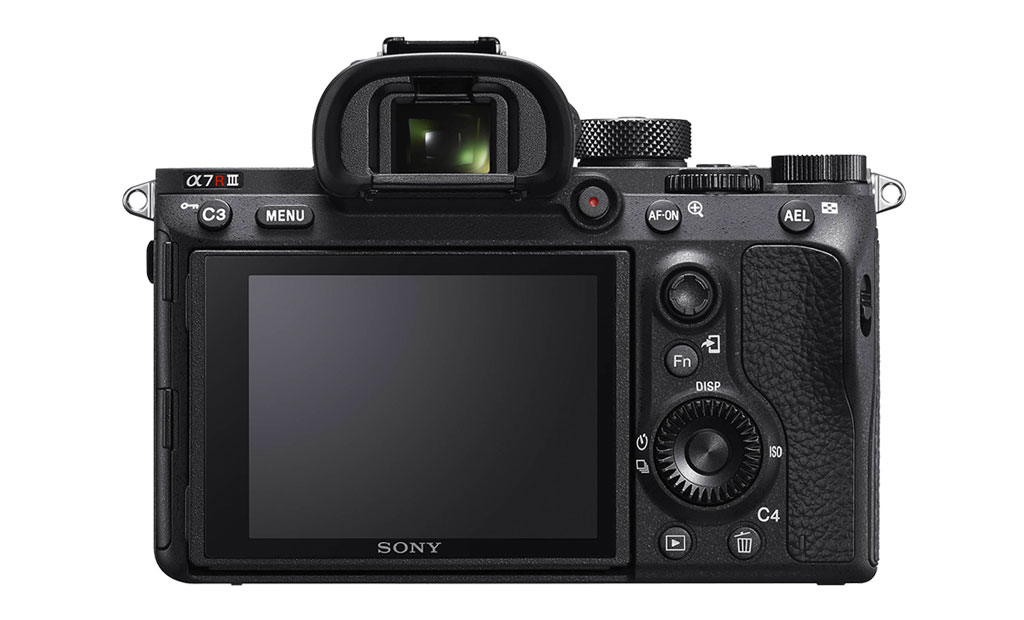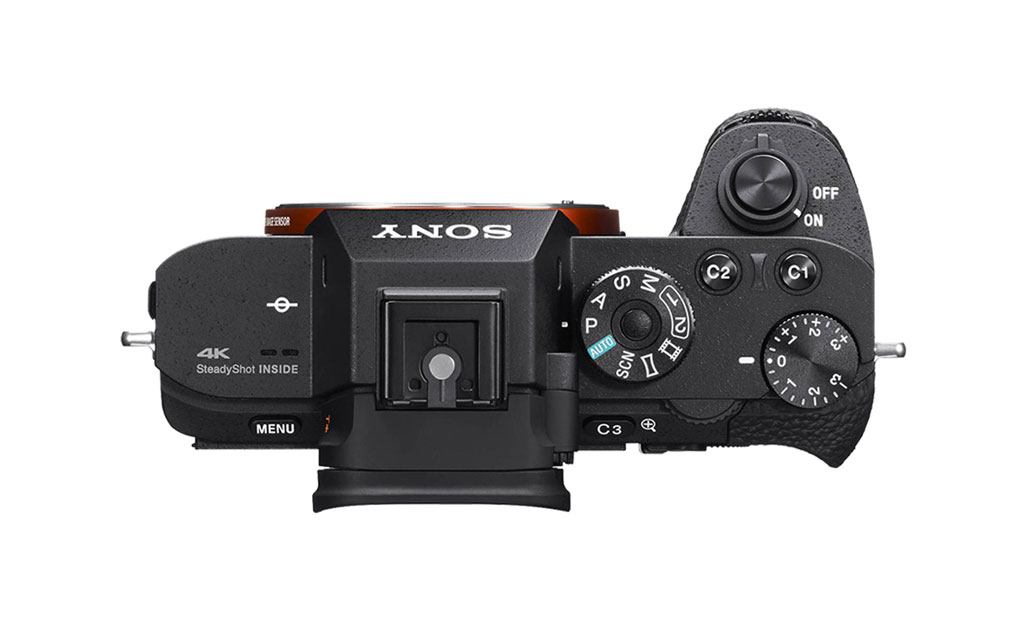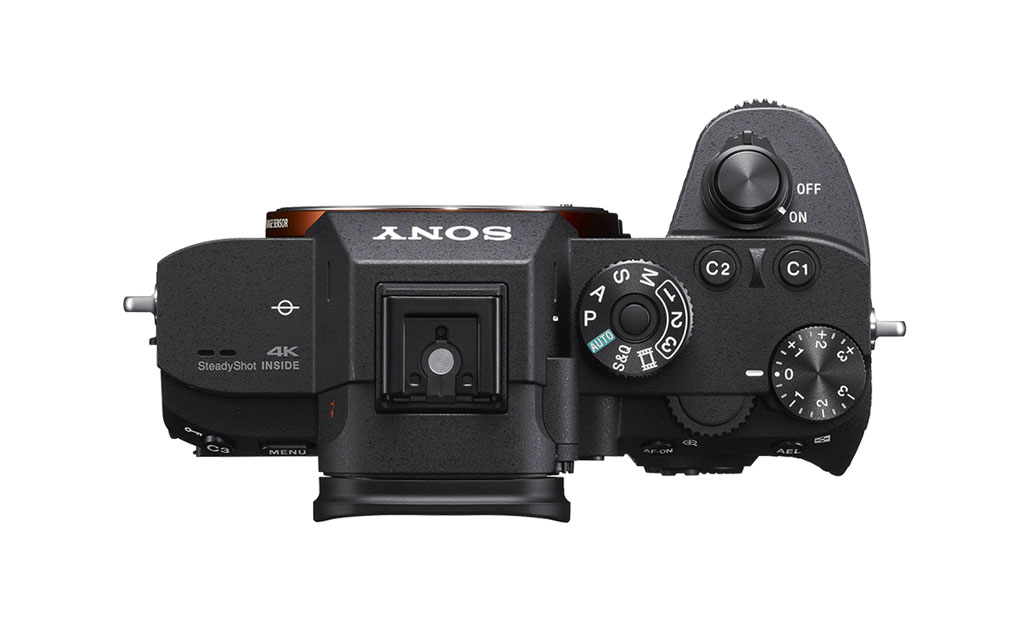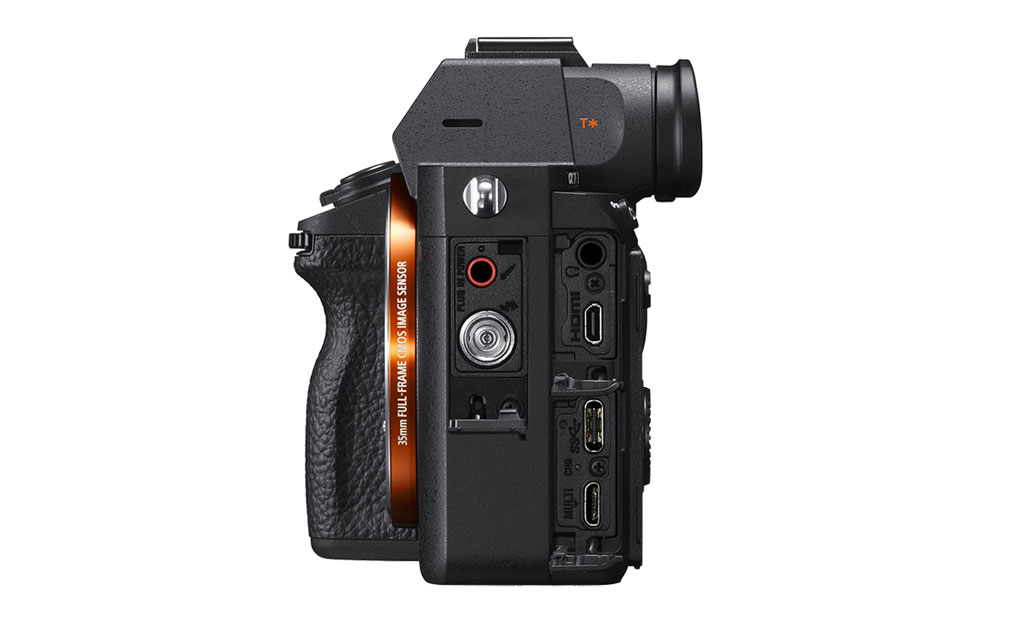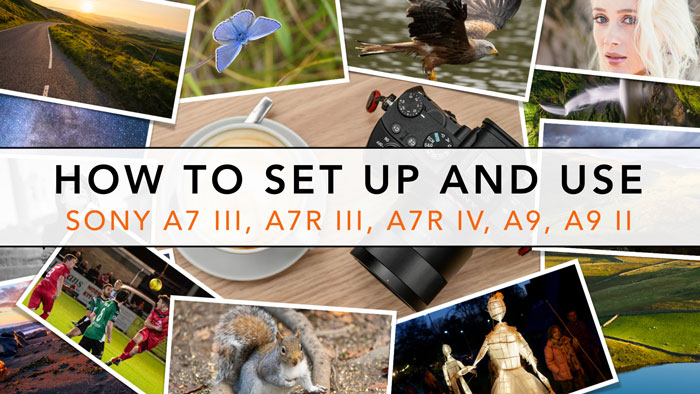Released in 2015, the Sony A7r mark II was a game changer in the mirrorless segment: it debuted with one of the best 35mm sensors to date, a fast phase detection AF that was the first to offer decent compatibility with DSLR lenses, and excellent 4K capabilities. Now, two years on from the release of the A7r II, we meet the A7r III which brings many welcome improvements to image quality and overall usability.
The new camera won’t feel unfamiliar to A7 series users as aspects of the design, such as the magnesium alloy body and weather sealing against dust and moisture, remain very similar. The new camera is heavier (675g vs 625g) and has more depth but the dimensions are very close to its predecessor.
Update: our full comparison is now online. Be sure to check it out!
There are, of course, also a number of characteristics that set these two full-frame Sony cameras apart. Are you interested in finding out more? Then keep on reading!
Ethics statement: The information supplied in this article is based on official specifications. We were not asked to write anything about these cameras, nor were we provided with any sort of compensation. Within the article, there are affiliate links. If you decided to buy something after clicking the link, we will receive a small commission. To know more about our ethics, you can visit our full disclosure page. Thank you!
1. Sensor
Although the sensor itself hasn’t changed – both cameras use BSI technology with 42.4MP and no AA filter – the A7rIII has received some updates from a hardware and software point of view.
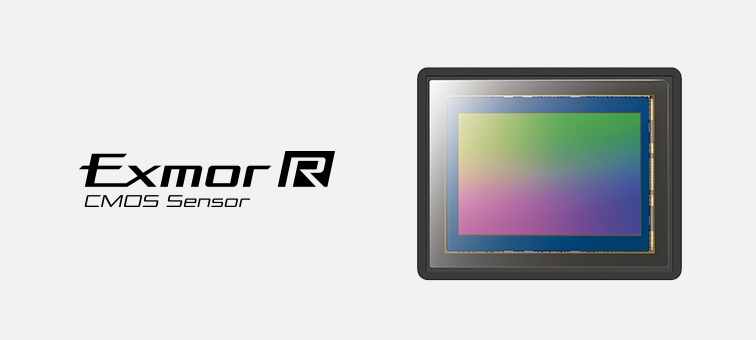
The new camera features a front end LSI chip that doubles the readout speed. This, coupled with the updated Bionz X image processor, not only allows the mark III to process more data, but also makes it twice as fast (1.8 times faster to be precise) as the A7r II.
The native ISO sensitivity is improved with a range of 100 to 32000 while the A7r mark II stops at 25600. The extended sensitivity is the same for both cameras (ISO 50, or up to ISO 102400) but the new image processor combined with the extended native ISO range should give the A7rIII a one stop of advantage in comparison to its predecessor.
Sony claims 15 stops of dynamic range for the A7r III which would be an improvement over the A7r mark II but we have yet to see how this translates into the real world. Among the other improvements stated, there is also better colour reproduction of skin tones. Both cameras have 14-bit output and uncompressed RAW. 14-bit is maintained on the A7r III with the electronic shutter (except when shooting at 10fps) while it drops to 12-bit on the A7r II.
2. Autofocus speed and accuracy
Both cameras feature 399 phase detection points while the number of contrast detection areas has increased dramatically on the new camera to 425 points in comparison to the 25 of the A7r mk2.
The AF speed is twice as fast according to Sony. Eye AF and face detection have been improved and the low light performance should be 2x more accurate with a -3Ev minimum sensitivity (at f/2), which is a one stop improvement in comparison to the -2Ev of the A7r mark II.
Both cameras can work with autofocus and adapted DSLR lenses including Sony A-mount and Canon EF mount lenses via compatible adapters. Sony claims that the performance has been improved on the new camera.
On the mark III you will also find AF in magnification mode which is useful for macro shooting.
3. Continuous shooting and buffer
The A7r II doesn’t offer impressive burst speeds, with a maximum of 5fps with AE/AF tracking and no live view in the EVF or on the LCD screen.
The A7r mark III improves the speed dramatically with a maximum of 10fps with continuous AE/AF. Up to 8fps, you get live view with blackouts just like the a6300/a6500 APS-C cameras. There is a new shutter mechanism that promises reduced vibrations. Another interesting aspect is that the mark III model can shoot at 10fps with flash which is useful for strobe shooting as long as your flash can keep up with the recycling speed.
Another small yet welcome improvement is that the function buttons, playback mode and menu system remain accessible while files are being written to the memory card.
Both cameras can benefit from an electronic first curtain and electronic shutter modes but there is no improvement concerning the maximum shutter speed, which is 1/8000s. The A7r III has an additional anti-flicker mode which should reduce the strobing/banding effect of certain artificial lights.
The buffer capabilities have been improved on the new camera with a maximum of 76 frames in JPG format and 28 frames in Uncompressed RAW format at full speed. By comparison, the mark II model can manage a maximum of 24 JPGs and 9 uncompressed RAW files.
4. Image stabilisation
Both cameras feature a 5-axis sensor shift system. That of the A7r mark III provides one extra stop of compensation: 5.5Ev vs 4.5Ev on the mark II (CIPA standards). The improvement should be visible for movie recording as well as when using OSS lenses.
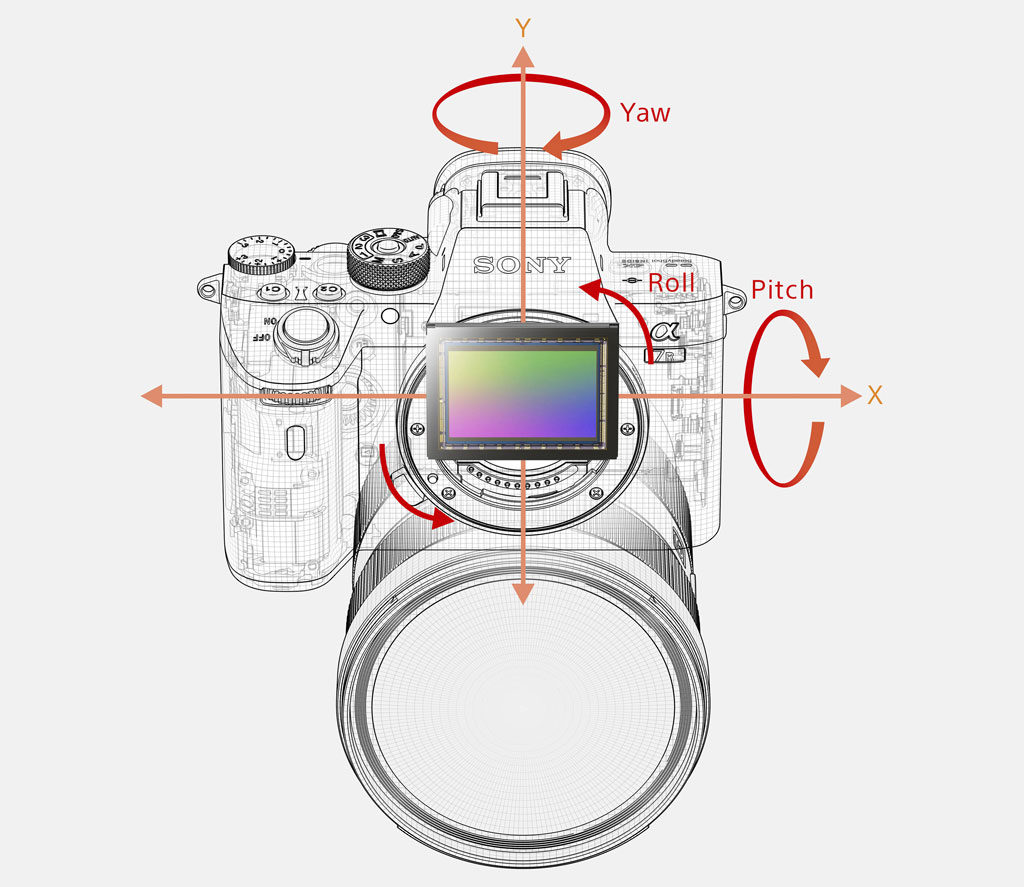
5. Pixel Shift Multi Shooting
This is a feature exclusive to the new A7r mark III: by taking advantage of the updated sensor shift hardware, the camera takes four images and moves the sensor by one pixel in between shots. This allows you to capture the full colour information of your scene. Each point in the final image is captured with one red, one blue and two green pixels while with a traditional shot, each point corresponds to just one blue, one red or one green pixel.
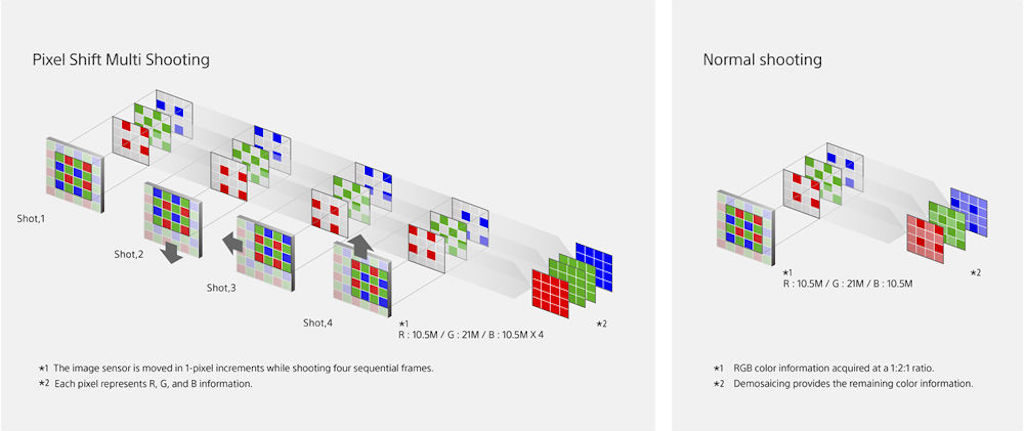
We’ve seen similar technology on other cameras including Olympus products such as the E-M5 II and the E-M1 II. However in this case the final composite doesn’t increase the resolution: although the total amount of data used equals approximately 170MP, the final output remains 42.4MP.
Furthermore the composite isn’t performed in-camera; you need the Sony imaging software suite to create the final image. Since we’re talking about four sequential shots with a delay between them, this feature will only give you good results if you use the camera on a tripod for static subjects.
6. Updated video specifications
Like the A7r II, the new A7r mark III can record in 4K up to 30fps and 100Mbps with the XAVC S codec. It can do this in 35mm format (full frame) or in Super35/APS-C mode. With the latter, it can perform full pixel readout with no pixel binning for superior sharpness and details.
The new camera has also been tweaked to make it more complete than its predecessor. In full frame mode, Sony states that it has improved the quality at the mid and high ISO range. (The A7r II becomes really noisy from 1600 ISO onward.)
The frame rate in 1080p has been increased to 120fps while the A7r II can only record at that speed in 720p.
Concerning the picture profiles, both have the S-Log2 gamma curve but the A7r III gets S-Log3 and a new HLG (Hybrid Log-Gamma) profile for compatible HDR workflow and HDR TV monitors. Finally there is also XAVC-S Proxy which is handy if you want to edit your video faster at a lower resolution.
7. Touch screen and EVF
Seen side by side, the two cameras look very much alike but the mark III model has received some welcome additions in terms of overall usability.
One of the noteworthy things to mention is touch screen capabilities. Not only is there more resolution (1.44 vs 1.28 million dots) but you can use the LCD to move the focus point while taking a shot or recording a movie. The Touch Pad function allows you to do the same while composing with the EVF. The rear monitor has improved brightness when shooting in bright outdoor locations.
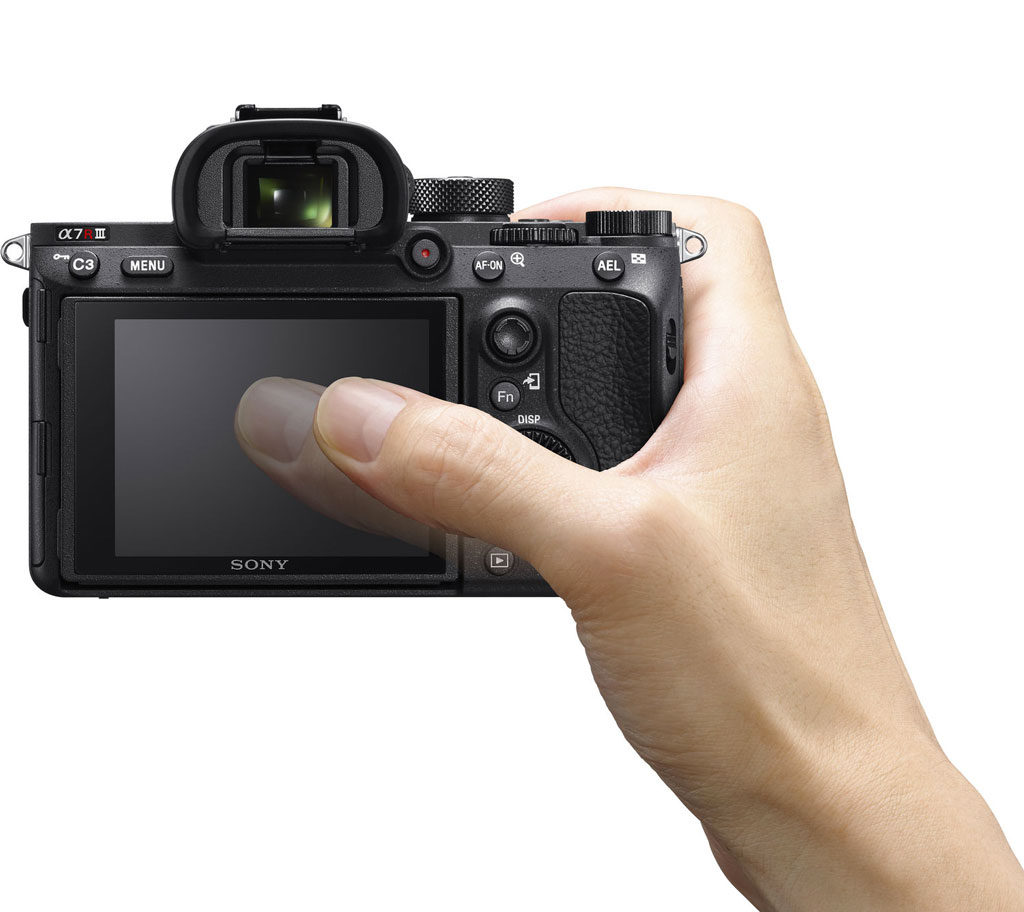
Like the Sony A9, the A7r mark III features the latest generation electronic viewfinder with 3.69 million dots. The refresh rate is now available at 100fps or 120fps.
On the A7r II, the EVF has 2.36M dots and goes up to 60fps. Magnification (0.78x), panel type (OLED) and Eyepoint (23mm) remain the same on both cameras.
8. AF Joystick and Dual SD card slot
Professional photographers will be pleased to know that the new camera inherits the same AF joystick of the flagship A9 as well as a dual SD card slot, two features that were greatly missed on the mark II model. Furthermore, one slot of the mk3 is UHS-II compliant.
Other improvements include a new movie recording button that is now near the EVF (which should prove a more comfortable position), an AF-ON button, more customisation options and the new menu system seen on the flagship A9.
9. Physical and wireless connections
The A7r III now uses a USB 3.1 Type C port for faster image transferring in comparison to the Micro USB 2.0 port of the A7r II. You’ll also find a flash sync port on the new camera. The new Sony imaging software suite, in addition to handling the Pixel Shift Multi mode, also improves tethering capabilities with USB and wireless options when connecting to a computer or FTP server.
Both cameras have a mic input and headphone output as well as a Micro HDMI port with 4:2:2 8-bit clean signal.
Concerning wireless connectivity, you can find WiFi and NFC on both models but the A7r III also receives Bluetooth to record location information. Using these methods, you can connect either camera to the PlayMemories app and remotely control them. However, unlike the A7r II and most other E-mount cameras, the A7r III no longer supports the downloadable apps found in the PlayMemories store.
10. Bigger battery
A long awaited improvement is the larger NP-FZ100 battery whose lifespan is longer than that of the A7r II. It is the same battery used for the A9.
To give you an idea, if we compare the official specifications, the new camera can record almost twice the number of images on a single charge (650 shots vs 390 shots) and twice the amount of time for 4K recording (100 minutes vs 50 minutes).
Conclusion
Update: our full comparison is now online. Be sure to check it out!
The A7r II left little to desire in terms of image quality, and the minor adjustments Sony made to the new camera should improve upon what was already almost perfect.
More than the sensor specifications, it is the improvement in speed and autofocus for sports and wildlife that makes the camera an appealing choice. It brings nearly all the enhancements we were waiting for: faster and more accurate performance without compromises on quality or resolution. It’s not as revolutionary as its predecessor was at the time but it is certainly the step forward we were hoping for.
As for the price, neither is cheap as you can imagine. At the time of publishing, the A7r II can be found for approximately $2400 / £2500 / €2600, although it is easy to find interesting deals. The A7r III is, of course, more expensive at $3200, £3,200 or €3,500.
Check the price of the Sony A7R III on:
Amazon | Amazon UK | B&H Photo | eBay
Check price of the Sony A7r II on:
Amazon | Amazon UK | B&H Photo | eBay
Used Sony cameras on
MPB US | MPB UK
You might also enjoy the following articles:

